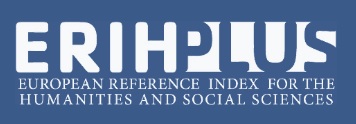S. E. Maykova, D. V. Okunev. Examination of the Prospects for Formation and Development of the Finno-Ugric Tourist Cluster in the Republic of Mordovia
UDK 338.48.64(470.345)
DOI: https://doi.org/10.15507/2413-1407.104.026.201803.438-459
Introduction. The article is of relevance due to the need to develop the tourism industry as one of the most attractive investment components of regional development from a strategic perspective. The purpose of the article is to substantiate the prospects for development of the Finno-Ugric tourist cluster in the territory of the Republic of Mordovia it being an integrating element of the comprehensive use of available resources involved in the process of providing tourist and recreational services and contributing to the competitiveness of the region.
Materials and Methods. The study employed the factor analysis as well as the methods of SNW analysis and integral assessment of the degree of influence of the factors on the tourism industry. Using the methods of mapping, a map of the long- term development of tourist clusters of the Republic of Mordovia was constructed.
Results. The influence of external and internal factors in the development of the tourism industry in the region was assessed on the basis of the analysis of the trends and dynamics of the development of the tourist services market in the Republic of Mordovia as well as of the degree and nature of the impact of external and internal factors on the formation of the tourism industry. The investment risk and potential of the tourism industry were ranked and a map of the long-term development of tourist clusters of the region was drawn conditioned by available natural resources, geographical location, cultural potential and traditions of the local population. It was proved that the ethno-cultural component was the key element of development of the tourism industry in the region.
Discussion and Conclusions. The cluster approach in the development of the tourism industry is the most promising one as it promotes the effective integration of all elements of the tourist services sector as well as the functioning of the tourist infrastructure, the growth of the investment attractiveness of this area of activity and the competitiveness of the region as a whole. The article is intended for managers and specialists of organizations and enterprises of the hospitality and tourism industry.
Keywords: tourism, ethno-tourism, tourist cluster, tourist product, tourist infrastructure
REFERENCES
1.Loginova N.N. Geodemographical and ekistic features of the Finno-Ugric peoples of Russia. Vestnik Udmurtskogo universiteta. Seriya: Biologiya. Nauki o Zemle = Bulletin of Udmurt University. Series: Biology. Earth Sciences. 2011; 2:128-133. Available at: http://en.biology.vestnik.udsu.ru/archive/show/6-2011-2-18 (accessed 20.03.2018) (in Russ.)
2.Loginova N.N., Rebrova T.P. Population dynamics of the Finno-Ugric peoples in Russia. Finno-ugorskiy mir = Finno-Ugric World. 2013. 3:89-97. Available at: http://csfu.mrsu.ru/ru/archives/371 (accessed 21.03.2018). (In Russ.)
3.Aleksandrova A.Yu. Tourist Clusters: Contents, limits, functioning. Sovremennye problemy servisa i turizma = Service and Tourism: Current Challenges. 2007; 1:51-61. Available at: http://spst-journal.org/publ/soderzhanie/1-1-0-1 (accessed 26.03.2018). (In Russ.)
4.Grishin S.Yu. Advantages of the creation and development of tourist clusters as the basic element of the national economy. Problemy sovremennoj ekonomiki = Problems of Modern Economics. 2016; 1(57):166-200. Available at: http://www.m-economy.ru/art.php?nArtId=5712 (accessed 29.03.2018). (In Russ.)
5.Dutova T.I. Formation of the modern tourist and recreational cluster as a way to improve competitiveness of Russian economy and its regions. Vestnik Novosibirskogo gosudarstvennogo universiteta. Seriya: Sotsialno-ekonomicheskiye nauki = Bulletin ofNovosibirsk State University. Series: Social and Economic Sciences. 2010; 10(1):99-106. Available at: http://elibrary.ru/item.asp?id=13043036 (accessed 30.03.2018). (In Russ.)
6.Karpova G.A., Valeeva E.O. Tourism development as the competitive advantage of the territory (on the example of the Northwest federal district subjects). Izvestiya Sankt-Peterburgskogo gosudarstvennogo ekonomicheskogo universiteta = Bulletin of the Saint Petersburg State University of Economics. 2015; 1(91):44-51. Available at: http://unecon.ru/izdaniya/zhurnal-izvestiya/arhiv-nomerov (accessed 26.03.2018). (In Russ.)
7.Karpova E.G. The essence and structure of an economic cluster. Nauchno-tekhnicheskiye vedomosti Sankt-Peterburgskogo gosudarstvennogo politekhnicheskogo universiteta. Seriya: Ekonomicheskie nauki = St. Petersburg Polytechnic University Journal of Engineering Science and Technology. Series: Economics. 2011; 2(119): 62-67. Available at: http://ntv.spbstu.ru/economics/article/E2.119.2011_11 (accessed 26.03.2018). (In Russ.)
8.Kostryukova O.N. Tourism and recreational cluster systems: idea and meaning for the economy of a region. Ekonomika i upravlenie = Economics and Management. 2011; 9(71):35-39. Available at: http://elibrary.ru/item.asp?id=16996627 (accessed 27.03.2018). (In Russ.)
9.Larionova N.A. Cluster approach in managing the region’s competitiveness. Ekonomicheskiy vestnik Rostovskogo gosudarstvennogo universiteta = Economic Herald of Rostov State University. 2007; 5(1-2):180-183. Available at: http://te.sfedu.ru/arkhiv-nomerov/2007/221-evrgu-n1-ch-2.html (accessed 27.03.2018). (In Russ.)
10.Morozova M.A. Cluster interaction in the sphere of hospitality: evaluation of the innovative potential. Problemy sovremennoj ekonomiki = Problems of Modern Economics. 2015; 1(53):303-305. Available at: http://www.m-economy.ru/art. php?nArtId=5337 (accessed 29.03.2018). (In Russ.)
11.Morozova M.A., Nazrieva M.V., Pilyavskiy V.P., Smirnova I.A. Formation of eco-tourism cluster “Ladoga Area” in specially protected natural areas. Vestnik Natsionalnoj akademii turizma = Vestnik of National Tourism Academy. 2015; 1(33):56-59. Available at: http://vestnik.nat-moo.ru/ru (accessed 30.03.2018). (In Russ.)
12.Popov A.R. Clustered forms of organization and financing of resort-tourist sphere. Regionalnaya ekonomika: teoriya i praktika = Regional Economics: Theory and Practice. 2010; 14:54-57. Available at: http://www.fin-izdat.ru/journal/region/detail.php?ID=25127 (accessed 30.03.2018). (In Russ.)
13.Shepelev I.G., Markova Yu.A. Tourist-recreational clusters - the mechanism of innovative perfection of system of strategic management development of regions. Sovremennye issledovaniya sotsialnykh problem = Modern Research of Social Problems. 2012; 3:10. Available at: http://elibrary.ru/item.asp?id=17855201 (accessed 30.03.2018). (In Russ.)
14.Hirschman A.O. The rise and decline of development economics. The Theory and Experience of Economic Development. Essays in Honour of Sir Arthur Lewis. 2012; p. 372-390. DOI: https://doi.org/10.4324/9780203838518
15.Hjalager A.-M. A review of innovation research in tourism. Tourism Management. 2010; 31:1-12. DOI: https://doi.org/10.1016/j.tourman.2009.08.012
16.Novelli M., Schmitz B., Spencer T. Networks, clusters and innovation in tourism: A UK experience. Tourism Management. 2006; 27(6):1141-1152. DOI: https://doi.org/10.1016/j.tourman.2005.11.011
17.Devesa M., Laguna M., Palacios A. The role of motivation in visitor satisfaction: Empirical evidence in rural tourism. Tourism Management. 2010; 31(4):547-552. DOI: https://doi.org/10.1016/j.tourman.2009.06.006
18.Arimond G., Elfessi A. A Clustering method for categorical data in tourism market segmentation research. Journal of Travel Research. 2001; 39(4):391-397. DOI: https://doi.org/10.1177/004728750103900405
19.Benur A., Bramwell B. Tourism product development and product diversification in destinations. Tourism Management. 2015; 50:213-224. DOI: https://doi.org/10.1016/j.tourman.2015.02.005
20.Maikova S.E., Sarmaeva T.A. Analysis of Saransk city territorial identity factors. Vestnik Samarskogo universiteta. Seriya: Ekonomika i upravlenie = Vestnik of Samara University. Economics and Management. 2012; 10(101):95-102. Available at: http://journals.ssau.ru/index.php/eco/article/view/5303 (accessed 30.03.2018). (In Russ.)
21.Maykova S., Okunev D., Gvozdetskaya I. Integral factor assessment of formation and development of Finno-Ugric tourist cluster. Journal of Environmental Management and Tourism. 2017; 8(4):703-712. DOI: https://doi.org/10.14505/jemt.v8.4(20).01
22.Okunev D., Maykova S., Gvozdetskaya I. Marketing analysis of domestic tour- ism development in the region. Regionologiya = Regionology. 2015; 2(91):162-167. Available at: http://regionsar.ru/ru/node/1387 (accessed 02.04.2018). (In Russ.)
Submitted 22.05.2018; accepted for publication 25.06.2018; published online 28.09.2018.
About the authors:
Svetlana E. Maykova, Associate Professor, Department of Marketing, National Research Mordovia State University (68/1 Bolshevistskaya St., Saransk 430005, Russia), Ph. D. (Economics), ORCID: http://orcid.org/0000-0001-7333-9716, Scopus ID: https://www.scopus.com/authid/detail.uri?authorId=57188767795, maikova_s@rambler.ru
Denis V. Okunev, Associate Professor, Department of Theoretical Economics and Economic Safety, National Research Mordovia State University (68/1 Bolshevistskaya St., Saransk 430005, Russia), Ph. D. (Economics), ORCID: http://orcid.org/0000-0001-7646-116X, Scopus ID: https://www.scopus.com/authid/detail.uri?authorId=55969699600, okunev_d@mail.ru
Contribution of the authors:
Svetlana E. Maykova – formulation of the basic concept of the research, preparation of the text of the article, data and evidence collection; analysis and preparation of initial conclusions; visualization of the data in the text.
Denis V. Okunev – conducting critical analysis of the materials and drawing conclusions; development of methodology.
For citation:
Maykova S.E., Okunev D.V. Examination of the Prospects for Formation and Development of the Finno-Ugric Tourist Cluster in the Republic of Mordovia. Regionologiya = Regionology. 2018; 26(3):438-459. DOI: https://doi.org/10.15507/2413-1407.104.026.201803.438-459
All authors have read and approved the final version of the manuscript.

All the materials of the "REGIONOLOGY" journal are available under Creative Commons «Attribution» 4.0
















